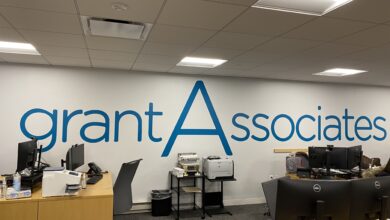
Large buildings, whether they are shopping malls, hospitals, office complexes, or universities, can be overwhelming to navigate without proper signage. Building wayfinding signage serves to guide people through these spaces efficiently, making their journey seamless. In this blog, we’ll explore what building wayfinding signage is, why it’s important, and how to design a system that works.
Types of Wayfinding Signage
A comprehensive wayfinding system for buildings typically includes four types of signs:
- Directional Signs: These signs help direct people to key areas, such as entrances, exits, restrooms, elevators, and specific rooms. They often feature arrows and clear instructions.
- Identification Signs: Used to label specific locations within a building, such as room names, department labels, and office numbers. Identification signs help visitors know when they have reached their destination.
- Informational Signs: These provide additional information, such as maps, directories, hours of operation, and building rules. They assist visitors in planning their route and understanding the layout.
- Regulatory Signs: Safety-related signs, including fire exit signs, emergency procedures, and accessibility symbols. They ensure the safety and well-being of everyone in the building.
How to Design an Effective Wayfinding System for Buildings
When creating a wayfinding system for a large or complex building, several factors should be considered:
- Color Coding: Assigning different colors to different floors, departments, or zones can make navigation easier, especially in multi-level buildings. For example, a hospital might use blue for cardiology, green for pediatrics, and red for emergency services.
- Clear Typography and Visibility: Fonts should be legible from a distance, and the text size should be large enough to be seen without straining. Placement should also be strategic to ensure visibility at key decision points.
- Consistency: Consistent use of colors, fonts, symbols, and design elements helps users quickly recognize and understand the signs. It prevents confusion and ensures a cohesive look throughout the building.
- Strategic Placement: Signs should be placed where people need to make decisions, such as intersections, entrances, and exits. Maps and directories should be located near main entrances for easy access.
Benefits of Effective Wayfinding Signage in Buildings
- Improved Navigation and User Experience: Clear signage reduces stress for visitors, helping them find their way quickly and confidently. This is particularly important in places like hospitals, where time is of the essence.
- Increased Safety and Accessibility: Properly placed regulatory signs help ensure that safety information is always visible, guiding people to exits during emergencies and complying with ADA standards for accessibility.
- Efficient Movement and Crowd Control: Effective wayfinding reduces bottlenecks by guiding people along designated paths, which is beneficial for events, conferences, or shopping centers.
Conclusion
Investing in a well-designed wayfinding system is crucial for any large building. It enhances the user experience, promotes safety, and ensures efficient movement throughout the space. Whether you are designing for a hospital, school, or corporate building, following best practices in wayfinding signage will make navigation easy for everyone.




